Problems with the Cybertruck seem to be flooding the web, from misaligned panels to poor mileage, but a malfunction in California could have been deadly.
A Tesla customer claimed that the electric vehicle’s brakes malfunctioned just weeks after purchase, causing the vehicle to crash into a traffic sign pole.
Footage of the incident showed the shiny steel front end shattered, the side panel hanging off and the hood bent on the side of impact.
The driver said they tried to slow the Cybertruck by pressing the brakes, only to find that they did not activate, and noted that the airbags also did not deploy when the electric vehicle collided with the pole.
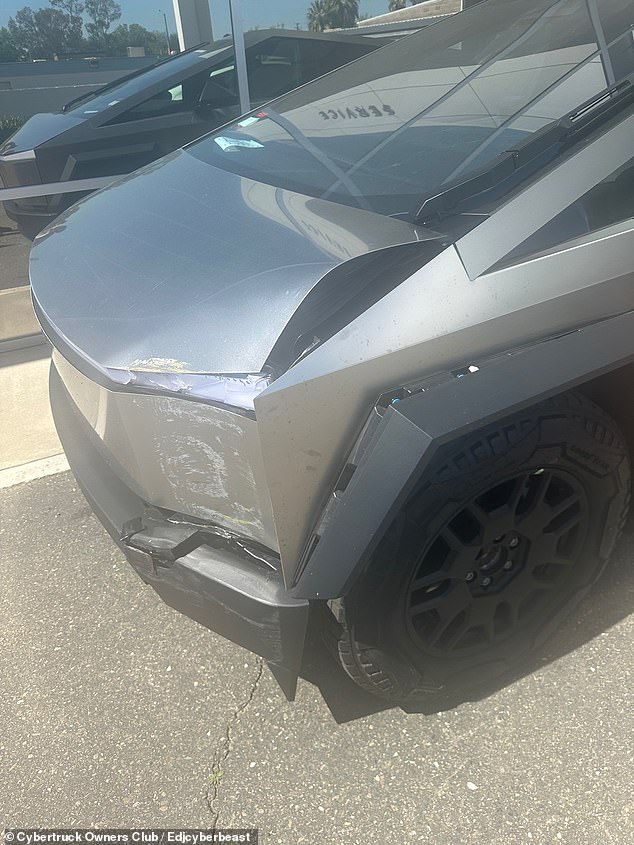
The stainless steel hood was bent and buckled from the reported accident, which occurred mid-corner, according to the driver.
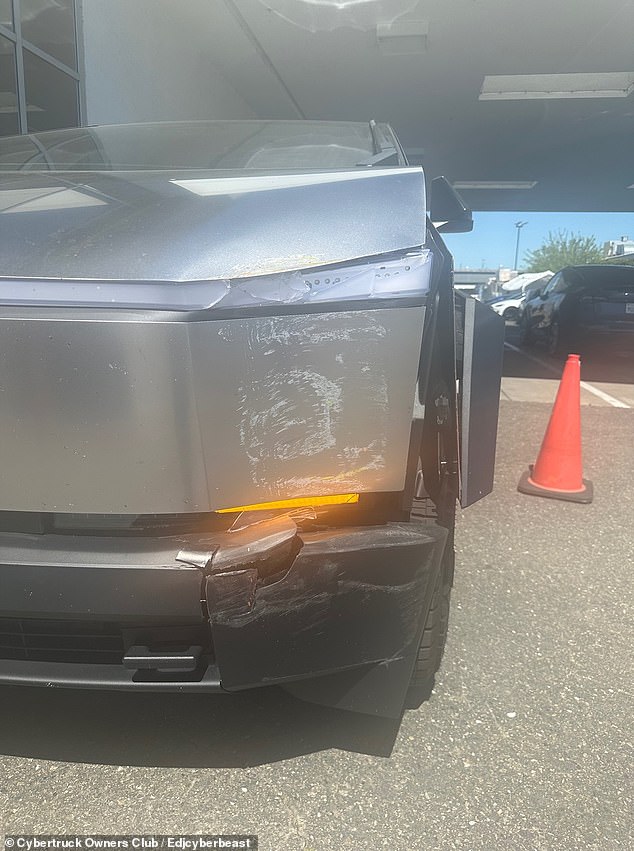

The owner of the Cybertruck posted photos of the damage suffered by the car after the accident. A broken bumper cover can be seen here.
In a publication in the Cyber Truck Owners Club On the forum, the driver explained that they were in the middle of the curve when he took his foot off the accelerator, but the truck did not slow down.
These problems tend to center on the regenerative braking system, which is designed to automatically brake once the driver takes their foot off the accelerator, generating electricity from the car’s inertial motion in the process.
It’s unclear what went wrong with the recently crashed Cybertruck, but its owner reported that it is in the hands of Tesla technicians, who should be able to provide some answers.
He also reported that he has requested electronic records.
So far, the post has garnered 12 pages of responses on the message board.
Driver wrote: ‘Guys, I had my truck for less than 350 miles. Something happened that I can’t explain… I was driving as usual and when entering a curve I released the accelerator but the speed didn’t decrease… so I pressed the brake… but it didn’t engage. ..until it was too late and I hit a light pole and the airbags didn’t deploy either.’
According to the driver’s answers to questions, they had only been driving the truck for five days and the problem occurred suddenly and abruptly.
No other problems had arisen before the accident.
Some commenters suggested that the problem could have been related to Tesla’s regenerative braking.
The driver confirmed that the regenerative braking did not appear to be working 100 percent:
“Regen was working but it was limited, it was different than before (I’m doing a poor job of explaining this), hence the application of the brakes, which also had a laggy feel,” they wrote.
The owner of the Cybertruck reported that he was sore but otherwise unharmed and said, “Even so, I still love the truck.”
DailyMail.com has contacted Tesla for comment.
Issues with regenerative braking have dogged Tesla, but the company ignored them when they surfaced in 2021.
The problem prompted the recall of 1.1 million Teslas in China in 2023, after multiple high-profile incidents in which the cars spun out of control.
Critics charged that the software that guides the automated deployment of regenerative braking can conflict with the driver’s own directives when trying to hit the brakes or accelerator, with potentially fatal consequences.
The fault is suspected in the murderous attack of a Model Y in November 2022 in the city of Chaozhou, northeast of Hong Kong.
But in the United States, a 2019 petition asking regulators to address the same issue was canceled in 2021.
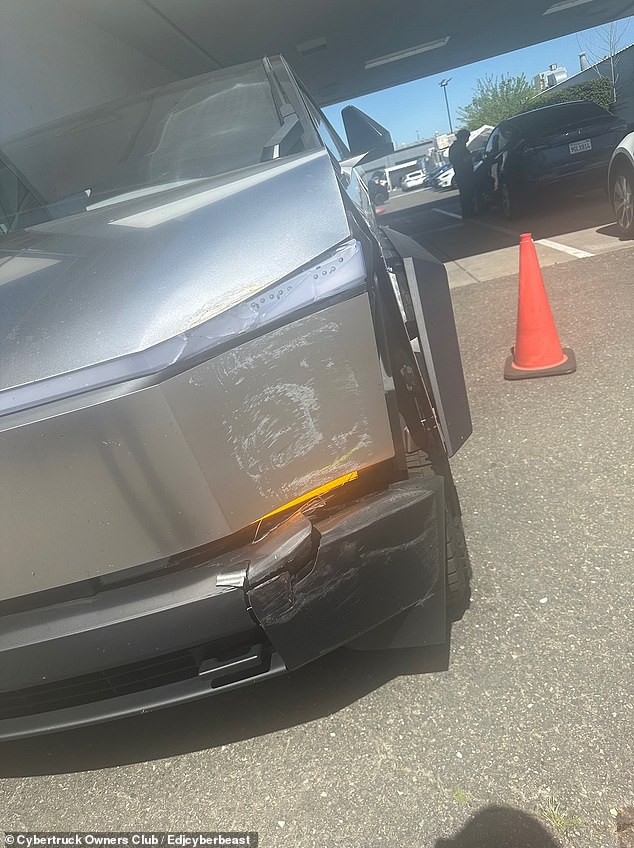

The truck has a large gap between the fender and the hood and bumper, and the fender hangs after the crash.
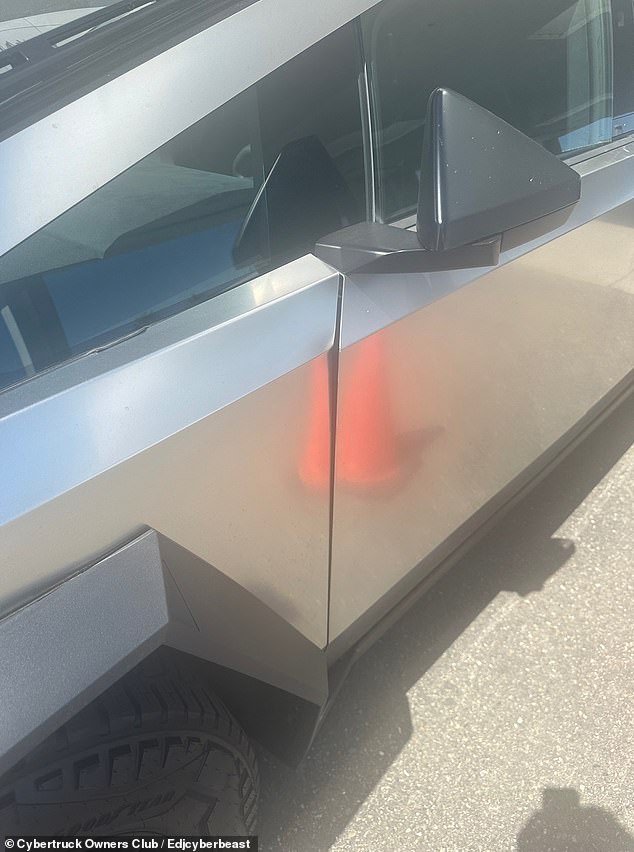

The Cybertruck’s door and fender were misaligned after the accident, in which the car crashed head-on into a light pole.
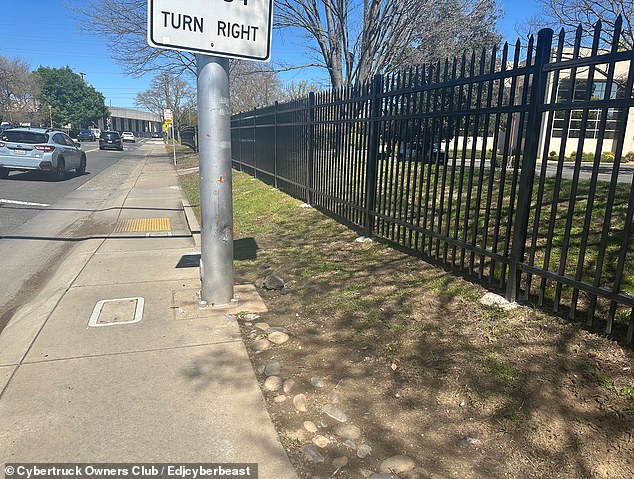

The owner of the Cybertruck shared this photo of the pole the truck hit. Dents can be seen at approximately the height of the bumper.
In 2021, a statement from the US National Highway Traffic Safety Administration (US NHTSA) stated that it found “no evidence” of nearly identical design problems reported by US citizens.
In a 2020 press releaseTesla accused the petitioners of making “completely false” claims at the behest of “a Tesla short seller.”
“The China recall explanation appears to run counter to NHTSA’s findings in 2021,” Michael Brooks, executive director of the nonprofit consumer advocacy group Center for Auto Safety, told DailyMail.com via email. .
The Center, which includes a retired electronics engineer and a physics Ph.D. Ronald Belt, who extensively studied the problem of braking and acceleration, contributed reports to NHTSA petition.
The petition was submitted at the initiative of a Tesla short seller, Brian Sparks of Berkeley, California.
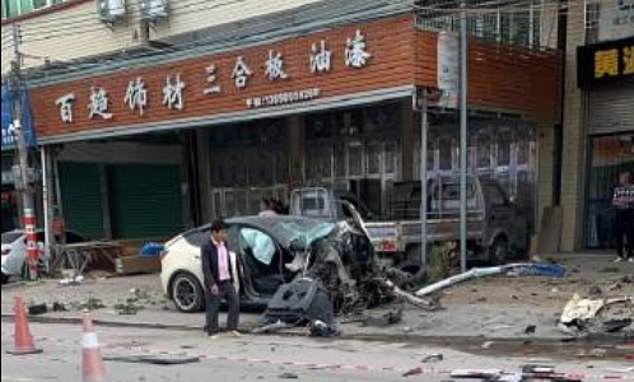

The Tesla Model Y smashed after speeding through the streets of Chaozhou city on November 5, 2022
“China’s action raises questions about whether there are design factors related to regenerative braking that were not previously considered in the agency’s review,” Brooks added.
A US NHTSA representative told DailyMail.com that federal regulators are closely monitoring the recall situation in China and “gathering more information from the manufacturer.”
Tesla promised it would fix the vehicles with a software update sent wirelessly to each car, according to a statement from Chinese regulators.
The update will reportedly add the option for drivers to select different regenerative braking forces and the option to change the feature’s default settings.
The software update will also warn drivers when they have stepped on the accelerator too much.
Regenerative braking is a pre-programmed feature intended to contribute to the “green” energy efficiency of electric vehicles. ‘Regen’ is activated the moment the driver begins to release the accelerator pedal, but this automatic braking can vary in the way the gradual deceleration occurs or in its response to manual overrides.
While this has caused confusion among drivers, there have also been indications that a technical fault between the automatic ‘regenerative braking’ system and the driver-controlled pedal braking system could also be contributing to the accidents.
It’s unclear if that’s what happened in this case, but before and since the 2023 recall, Tesla has sent out multiple software updates to try to fix the regenerative braking issues.
The owner of the Cybertruck clarified that there were no warning indicator lights before the incident: the truck “did not decelerate fast enough and the brakes did not apply fast enough, there was a delay.”
However, the owner’s enthusiasm for his Cybertruck did not seem to wane.
“Everything was spectacular. I enjoy the vehicle and am glad I did not suffer any damage,” they wrote, noting that the airbags did not deploy.
“I definitely have whiplash,” they added.
